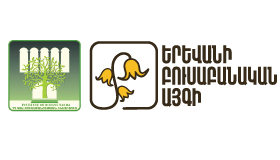Herbarium

Herbarium
The systemic examination of Armenia’s plant life finds its roots in the work of A.B. Shelkovnikov, a distinguished naturalist of Armenian heritage. In the early 1920s, his collection of plant specimens from Northern Armenia became the nucleus for the formation of the Natural History Museum of Armenia in 1925. The herbarium maintained by the Department of Plant Taxonomy and Geography at the RA Institute of Botany (internationally indexed as ERE) is highly esteemed, earning recognition not only within our country, but also commanding admiration beyond our borders. This repository of vascular plants encompasses approximately half a million specimens and is organized into the following sections:
- The local herbarium showcasing Armenia’s flora is a national treasure, being the sole collection worldwide that preserves the distinctive plant species of Armenia. Presently, this exceptional repository comprises more than 200,000 samples.
- The general herbarium stands as a unique assemblage, featuring plants sourced from more than 50 countries globally. During the Soviet era, it experienced regular enrichment through herbarium exchanges with botanical institutes worldwide. The institute’s personnel also contributed to its diversity through foreign scientific expeditions. Today, the cumulative collection of the herbarium exceeds an impressive 82,000 specimens.

3. The most significant section within the herbarium, known as its “golden” fund, consists of nomenclatural types, representing specimens from which new species and subspecies taxa have been formally described. The oldest specimen in our possession dates back to 1831. Currently, the type collection encompasses a total of 2,000 species.
4. The duplicates fund, housing around 100,000 samples, was established and expanded by reproducing inseminated specimens from the local herbarium. Its primary objective was to facilitate exchanges with the herbaria of various botanical institutes.
Drawing upon the research conducted with the ERE herbarium fund, a series of significant monographs has been published. Notable among them are the 11-volume “Flora of Armenia”, “Flora of Yerevan”, and “The Red Book of Armenia” (with its inaugural edition in 1990 and an updated version in 2010). Furthermore, the forthcoming release of the four-volume “Critical Synopsis of Flora of the Caucasus” is currently in its final stages of development.
The Palynoteca (a collection of pollen preparations), founded in the 1950s at the Institute of Botany on the National Academy of Sciences of the Republic of Armenia, has been consistently enriched with new preparation. A significant portion of this collection is dedicated to samples representing diverse flora types found in Armenia. Currently, the palynoteca encompasses an impressive array of over 14,000 specimens.





The Cytotheca (a collection of cytological preparations), founded in the 1970s at the Institute of Botany of the National Academy of Sciences of the Republic of Armenia, has been consistently enriched with new preparations. A significant portion of this collection is dedicated to samples representing diverse flora types found in Armenia. Currently, the cytotheca encompasses an impressive array of over 5,000 specimens.
Working Hours
- Monday9:00am-20:00pm
- Tuesday9:00am-20:00pm
- Wednesday9:00am-20:00pm
- Thursday9:00am-20:00pm
- Friday9:00am-20:00pm
- Saturday9:00am-20:00pm
- Sunday9:00am-20:00pm

